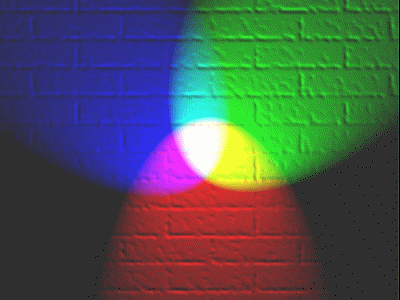 A blend of primary colors
"Using the three primary colors we can get all colors of light".
A blend of primary colors
"Using the three primary colors we can get all colors of light".
Primary colors are sets of colors that can be combined to make a useful range of colors.
For human applications, three primary colors are usually used, since human color vision is trichromatic.It has been established scientifically that for the human eye, light of any color can be produced by combining red, green and blue light of various intensities.
Additive mixing of red and green light produces shades of yellow, orange, or brown. Mixing green and blue produces shades of cyan, and mixing red and blue produces shades of purple, including magenta. Mixing nominally equal proportions of the additive primaries results in shades of Grey or White; the color space that is generated is called an RGB color space.
The complementary colors are cyan, magenta, and yellow which are formed by combining the two adjacent primary colors. Red and blue make magenta, blue and green make cyan, and red and green make yellow.
The primary and complementary colors combine to make the Color Wheel. Clockwise from the top the colors are: yellow, green, cyan, blue, magenta and red. On the Color Wheel, harmonizing colors are adjacent. Contrasting colors are separated by another color. Red and green are contracting colors. Colors that clash are opposite on the wheel – green and magenta for example.
The luminescence is the characteristic of a color that describes whether a color is light or dark. A bright color seems to reflect more light than a dark one.